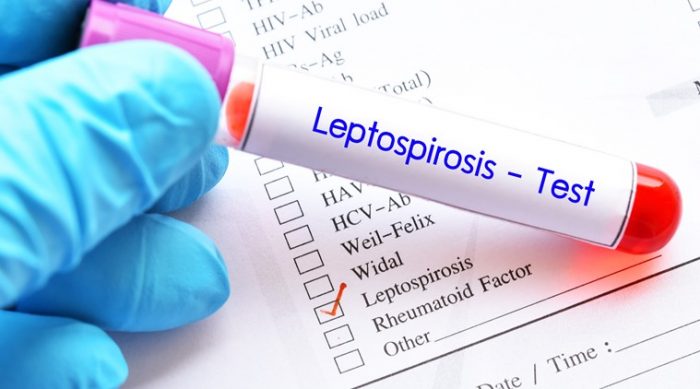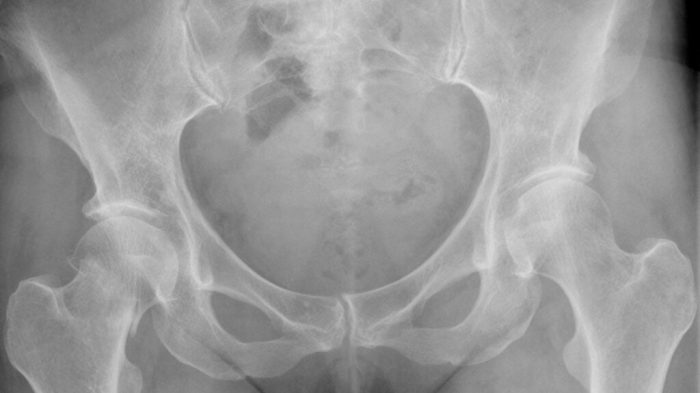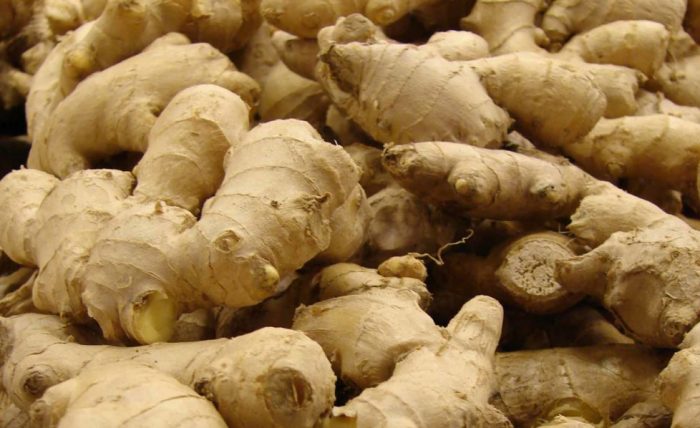Scientists have continued to advance efforts to identify and validate plants and natural products with antiviral properties, especially against the deadly Severe Acute Respiratory Syndrome Coronavirus type 2 (SARS-CoV2).
Nigerian researchers have identified ginger, garlic, onion, bitter kola, alligator pepper, black seed, turmeric, bitter leaf, zinc and vitamin C to have the capacity to prevent and treat COVID-19.
The study titled “Frugal Chemoprophylaxis against COVID-19: Possible preventive benefits for the populace” was published in the International Journal of Advanced Research in Biological Sciences.
The researchers from Departments of Biochemistry, Faculty of Basic Medical Sciences, College of Medicine, University of Ibadan, Ibadan, Oyo State; University of Lagos, Lagos State; and Federal University of Technology, Akure, Ondo State, led by Dr. Teibo John Oluwafemi, concluded: “…The pathophysiology of SARS-CoV-2 infection, is associated with aggressive inflammatory responses which uncontrolled inflammation inflicts multi-organ damage leading to organ failure, especially of the cardiac, hepatic and renal systems and most patients with this infection who progressed to renal failure eventually death.
“In this review, some medicinal foods were elucidated, which include ginger, garlic, onion, bitter kola, alligator pepper, black seed, turmeric, bitter leaf, zinc and vitamin C which possess potent pharmacological activities which include anti-inflammatory, anti-viral, anti-pyretic properties, inhibition of viral replication properties against the symptoms displayed by SARS-COV-2 infection. These frugal medicinal foods offer great chemoprophylaxis benefits and can play potent roles in the prevention and curtailing of the community spread of COVID-19 as it enhances boosted immunity and defense of the body system as a result of its cost effectiveness and availability.
“We hereby recommend that further research should be done to evaluate the protective roles of these medicinal foods on COVID-19 infection as well as promote the development of drugs and improved plant medicines as this outcome can prepare the global populace against subsequent global outbreak of viruses.”
Also, another research found that curcumin, a natural compound found in the spice turmeric, could help eliminate certain viruses.
A study published in the Journal of General Virology showed that curcumin could prevent Transmissible gastroenteritis virus (TGEV) – an alpha-group coronavirus that infects pigs – from infecting cells. At higher doses, the compound was also found to kill virus particles.
Infection with TGEV causes a disease called transmissible gastroenteritis in piglets, which is characterised by diarrhoea, severe dehydration and death. TGEV is highly infectious and is invariably fatal in piglets younger than two weeks, thus posing a major threat to the global swine industry. There are currently no approved treatments for alpha-coronaviruses and although there is a vaccine for TGEV, it is not effective in preventing the spread of the virus.
To determine the potential antiviral properties of curcumin, the research team treated experimental cells with various concentrations of the compound, before attempting to infect them with TGEV. They found that higher concentrations of curcumin reduced the number of virus particles in the cell culture.
The research suggests that curcumin affects TGEV in a number of ways: by directly killing the virus before it is able to infect the cell, by integrating with the viral envelope to ‘inactivate’ the virus, and by altering the metabolism of cells to prevent viral entry.
Lead author of the study and researcher at the Wuhan Institute of Bioengineering, Dr. Lilan Xie, said: “Curcumin has a significant inhibitory effect on TGEV adsorption step and a certain direct inactivation effect, suggesting that curcumin has great potential in the prevention of TGEV infection.”
Curcumin has been shown to inhibit the replication of some types of virus, including dengue virus, hepatitis B and Zika virus. The compound has also been found to have a number of significant biological effects, including antitumor, anti-inflammatory and antibacterial activities. Curcumin was chosen for this research due to having low side effects according to Xie. They said: “There are great difficulties in the prevention and control of viral diseases, especially when there are no effective vaccines. Traditional Chinese medicine and its active ingredients are ideal screening libraries for antiviral drugs because of their advantages, such as convenient acquisition and low side effects.”
The researchers now hope to continue their research in vivo, using an animal model to assess whether the inhibiting properties of curcumin would be seen in a more complex system. “Further studies will be required, to evaluate the inhibitory effect in vivo and explore the potential mechanisms of curcumin against TGEV, which will lay a foundation for the comprehensive understanding of the antiviral mechanisms and application of curcumin” said Xie.
Meanwhile, the researchers from Departments of Biochemistry, Faculty of Basic Medical Sciences, College of Medicine, University of Ibadan, Ibadan, Oyo State; University of Lagos, Lagos State; and Federal University of Technology, Akure, Ondo State, reviewed some medicinal foods, leafs and spices that has chemoprophylaxis and potent pharmacological activities which include anti-inflammatory, anti-viral, anti-bacterial, antioxidant, anti-pyretic and inhibition of viral replication properties against the SARS-COV-2 symptoms and elucidated their bioactive compounds with their mechanism of action and suggested possible preventive roles they play in the abating the spread of the COVID-19 and reduce the cases globally in a bid of raising the immune system function and possible abate the development of symptoms and general health function.
The researchers said frugal chemoprophylaxis, using natural products and foods were considered due to some factors which include readily available, cost effective as well as economical provident due to the current state of the global economy and as such foods, herbs and spices that are already known globally are considered.
They presented the preventive potentials of some medicinal foods, natural products and their role in mitigating as well as abating the community spread of COVID-19 globally and enhancing immune system function.
Top on their list is alligator pepper/grains of paradise (Aframomum melegeuta). According to the study, alligator pepper is one seed with many healing power and of great benefits to mankind. The seeds of the plant are used to flavour foods and as components of traditional African medicine. Alligator pepper has been reported to have anti-ulcer, anti-microbial, anti-nociceptive, anti-plasmodial, hepato-protective and anticancer activities. Aframomum melegueta is mixed with other herbs for the treatment of common ailments such as body pains, diarrhoea, sore throat, catarrh, congestion and rheumatism in Nigeria. Diabetes, a major underlying disease of people afflicted with COVID-19 might also be combated by Aframomum melegueta.
A myriad of compounds found in Aframomum melegueta such as 6-paradol, 6-shagaol, 6-gingerol, oleanolic acid and acarbose exert an anti-diabetic effect by inhibiting enzymes such as α-amylase and α-glucosidase. These enzymes are responsible for digestion and break down of carbohydrates and polysaccharides from food into simple sugars to increase blood glucose levels. Among the compounds, 6-gingerol and oleanolic acid are more effective in inhibiting the enzymes.
Aframomum melegueta is suitable for consumption by diabetic patients; its consumption will help a diabetic patient stay healthy. The ethanolic seed extract and stem bark of Aframomum melegueta contains phytochemicals such as tannins, saponins, flavonoids, steroids, terpernoids, cardiac glycosides and alkaloids that possess antimicrobial and anti-inflammatory effects. These compounds, which are natural antioxidant, are believed to scavenge free radicals and offer protections against viruses, allergens, microbes, platelet aggregation, tumours, ulcers and hepatotoxins (chemical liver damage) in the body. To support this claim of anti-inflammatory properties of Aframomum melegueta Ilic et al. reported that ethanolic Aframomum melegueta extract inhibited cyclooxygenase-2 (COX-2). Compounds that inhibit COX-2 activity are capable of reducing inflammatory responses. The most active COX-2 inhibitory compound in the Aframomum melegueta extract was [6]-paradol, while [6]-shogaol was found to inhibit expression of a pro-inflammatory gene, interleukin-1 beta (IL-1β).
Turmeric (Curcuma longa) belongs to the family of ginger (Zingiberaceae) and natively grows in India and Southeast Asia. The plants rhizomes contain several secondary metabolites including curcuminoids, sesquiterpenes, and steroids with the curcuminoid curcumin being the principal component of the yellow pigment and the major bioactive substance. It has been used as traditional medicine from ancient time, especially in Asian countries. Plants as a rich source of phytochemicals with different biological activities including antiviral activities are in interest of scientists. It has been demonstrated that curcumin as a plant derivative has a wide range of antiviral activity against different viruses. Inosine monophosphate dehydrogenase (IMPDH) enzyme due to rate-limiting activity in the de novo synthesis of guanine nucleotides is suggested as a therapeutic target for antiviral and anticancer compounds.
Among the 15 different polyphenols, curcumin through inhibitory activity against IMPDH effect in either noncompetitive or competitive manner is suggested as a potent antiviral compound via this process.
Furthermore, protein molecules encoded by the SARS-CoV-2 genome are potential targets for chemotherapeutic inhibition of viral infection and its replication. These intriguing targets include the spike protein (S), which mediates the entry of the virus, the SARS-CoV-2 main protease (3CL protease), the NTPase/helicase, the RNA-dependent RNA polymerase, the membrane protein (M) required for virus budding; the envelope protein (E) which plays a role in coronavirus assembly and the nucleocapsid phosphoprotein (N) that relates to viral RNA inside the virion and possibly other viral protein-mediated processes. With such a drastic increase in molecular and biochemical information about various components of the SARS-CoV-2 and their cellular targets, it is important and timely to again evaluate anti-SARS-CoV-2 activities of various turmeric phyto-compounds. It is to be noted that in vitro studies have positively demonstrated effective antiviral properties of curcumin against enveloped viruses such as Dengue virus (DENV), influenza virus and emerging arboviruses like the Zika virus (ZIKV) or chikungunya virus (CHIKV), which are similar to the SARS-CoV-2 an enveloped virus.
Bitter leaf (Vernonia amygdalina) commonly called bitter leaf is the most widely cultivated species of the genus Vernonia that has about 1,000 species of shrubs. Bitter leaf is a seedless plant, green in colouration with a characteristic odour and bitter taste. It has different names such as ‘Omjunso’ in East Africa especially Tanzania, ‘Ewuro’ in Yoruba, Etidot (Ibibio), Ityuna (Tiv), Oriwo (Edo), Chusa-dokiShiwaka (Hausa), and ‘Omubirizi’ in southwestern Uganda.
Vernonia amygdalina is known as food and medicinal plants used in Asia and Africa (West Africa) due to its pharmacological effects which include antioxidant, anti-inflammatory, anti-diabetes, anticancer, anti-malaria etc. One major properties of considering Vernonia amygdalina in the management of COVID-19 is its antioxidants property. Antioxidants inhibit deleterious effects of free radicals that are capable of deteriorating lipid biomembranes in the human body.
Researchers in the field of medical sciences have observed free radical scavenging ability and antioxidant property in Vernonia amygdalina. Vernonia amygdalina has been documented to possess antioxidant properties, which correlates to its medicinal properties. Antioxidant activities of bioactive compounds isolated from Vernonia amygdalina leaves have been established from various studies.
Farombi and Owoeye (2011) observes phytochemicals compounds such as saponins and alkaloids, terpenes, steroids, coumarins, flavonoids, phenolic acids, lignans, xanthones, anthraquinones, edotides, sesquiterpenes extracted and isolated from Vernonia amygdalina to elicit various biological effects in humans including cancer chemoprevention. The chemoprophylaxis properties of Vernonia amygdalina was attributed to their abilities to scavenge free radicals, induce detoxification, inhibit stress response proteins and interfere with DNA binding activities of some transcription factors.
Nigella sativa, commonly known, as black seed is native to Southern Europe, North Africa and Southwest Asia and it is cultivated in many countries in the world like Middle Eastern Mediterranean region, South Europe, India, Pakistan, Syria, Turkey, and Saudi Arabia.
Nigella sativa is regarded as a valuable remedy for various ailments, the seeds, oil and extracts have played an important role over the years in ancient Islamic system of herbal medicine. Bukhari reported that Holy Prophet Muhammad (peace be upon him) told, “There exists, in the black grains, health care of all the diseases, except death”.
Many studies have been carried out to affirm the acclaimed medicinal properties emphasized on different pharmacological effects of N. sativa seeds such as antioxidant, anti-tussive, gastro protective, anti-anxiety, anti-inflammatory, anti-cancer, immunomodulatory and anti-tumor properties, hepatoprotective effect, protective effects on lipid peroxidation, antibacterial activity, antiviral activity against cytomegalovirus have been reported for this medicinal plant.
It should be noted that the seeds of N. sativa are the source of the active ingredients of this plant.
Thymoquinone (TQ), dithymquinone (DTQ), which is believed to be nigellone, thymohydroquinone (THQ), and thymol (THY), are considered the main phytochemicals of the seed.
[a]d
Nigella sativa seeds contain other ingredients, including nutritional components such as carbohydrates, fats, vitamins, mineral elements, and proteins, including eight of the nine essential amino acids. The potential immune-modulatory and immunotherapeutic potentials of Nigella sativa seed active ingredients, most especially TQ will show a promising therapy in managing COVID-19 virus.
Ginger, with the botanical name Zingiber officinale is a commonly used spice and belongs to the family Zingiberaceae. Its local names are Ata-ile, Jinja, and Cithar among the Yoruba, Igbo and Hausa folks of Nigeria. Commonly, ginger can be found in subtropical and tropical Asia, Africa, Far East Asia, China, and India. It can be used as a component in curry powder, sauces, ginger bread, and ginger-flavoured carbonated drinks and also in the preparation of dietaries for its aroma and flavour. Investigations reveal that ginger possesses several biological properties such as anti-inflammatory and anti-oxidative, antimicrobial, neuro-protective, cardiovascular protective, antidiabetic and anti-nausea, antiemetic activities and chemo-protective effects.
Its main bioactive components are 6-gingerol, 6-shogaol which are phenolics, thus accounting for its various bioactivities.
Till date, there are no antiviral therapeutics that specifically target human corona viruses, and thus completely eradicating the pandemic. Even though several potential vaccines have been developed, such as recombinant attenuated viruses, live virus vectors, or individual viral proteins expressed from DNA plasmids.
However, none have been yet approved for use. The limitation with the use of vaccines is a propensity of the viruses to recombine, thereby posing a problem of rendering the vaccine useless and potentially increasing the evolution and diversity of the virus into a more virulent form. It therefore implies that a preventive approach could be a better option.
Possible Mechanism of action of ginger against Corona virus: Virus–receptor interactions play a key regulatory role in viral host range, tissue tropism, and viral pathogenesis. Many α-coronaviruses utilise amino-peptidase N (APN) as their receptor, SARS-CoV and HCoV-NL63 use angiotensin-converting enzyme 2 (ACE2) as their receptor, MHV enters through CEACAM1, and the recently identified Middle East Respiratory Syndrome Coronavirus (MERS-CoV) binds to dipeptidyl-peptidase 4 (DPP4) to gain entry into human cells. Following receptor binding, the viruses then proceeds into the cytosol of the host.
A possible mechanism of preventing access of the viruses into the host’s cell could be the inhibition of microbial binding to cellular receptors. In the antimicrobial mechanism of ginger, inhibition of receptor binding has been identified as a major mechanism.
Hitherto, ACE-2 has been associated with an obscure function, not until in recent times with the widespread of COVID-19. It is now established as a protein being recognised by various corona viruses to gain entry into hosts cell, suggesting it to be a therapeutic target in the treatment of the disease.
The researchers noted: “We propose that both ACE receptor antagonism and agonism can be an effective mechanism of ginger in its chemo preventive strategy against corona viruses. This claims are supported by a recent report of Cava et al. who demonstrated through computational methods that anti-ACE 2 compounds could be effective in blocking the replication of SARS-CoV variant.
“Moreover, Huentelman et al. also used docking methods to predict the inhibitory ability of small molecules against ACE 2 enzymes, and possibly inhibiting SARS corona virus S protein mediated cell fusion, and high binding affinity was scored. In addition, different bioactive compounds in ginger have been shown to have different effects on ACE2. One mechanism is through ACE 2 inhibition.
“A study by Alu’datt et al. in the bid to evaluate the anti-hypertensive activity of ginger, demonstrated that its methanolic extract has excellent inhibitory activity on ACE 2 at an extraction temperature and time of 400C and six hours respectively. To further corroborate our hypothesis, 3-3’-digallate, a phenolic compound present in ginger was found to interact with ACE2 receptor in recent computational modelling studies. Taken together, we suggest that the intake of ginger might be beneficial for both prevention and treatment of the pandemic COVID-19. Ginger is able to inhibit ACE-2, thereby preventing the binding of the corona virus to the protein.”
Garlic (Allium sativum) is a widely consumed spice in the world, and it contains diverse phytochemicals such as organosulphur compounds, saponins, phenolic compounds, and polysaccharides. However, its major bioactive compounds are the organosulphur compounds including allicin, alliin, diallylsulphide, diallyldisulphide, diallyltrisulphide, ajoene, and S-allyl-cysteine. It has been reported that garlic and its constituents exhibit different bioactivities such as anti-carcinogenic, antioxidant, anti-diabetic, reno-protective, anti-atherosclerotic, antibacterial, antifungal, and antihypertensive activities.
The researchers noted: “From the foregoing, worthy of relevance to our subject matter among the bioactivities of garlic is its antiviral properties. We suggest that this could be due in part to its anti-inflammatory and antioxidative abilities. The antiviral potential of garlic extracts has been demonstrated against influenza virus and entero-virus, herpes simplex type 2, dengue virus, Infectious Bronchitis virus, Newcastle Disease virus etc.
“Major challenges in treating viral diseases are the development of resistance in the virus against the antiviral drugs, due to the high mutation rate of the viral RNA Polymerase and some of the antiviral drugs can also induce negative side effects in the body. Therefore, it is necessary to find alternative therapies in natural plants and their products, out of which garlic stands out significantly, because of its robust pharmacological bioactive components as stated above. Below is a possible mechanism of action of garlic for the prevention and treatment of the human corona virus.
“…Interestingly, allicin and quercetin, which are bioactive compounds of garlic were found to exhibit inhibitory action on the COVID-19, thereby demonstrating similar binding affinity when compared to other potent peptide inhibitors such as Nelfinavir and lopinavir in an in silico study of protein-protein docking.
“Furthermore, it was demonstrated by Weber et al. that treatment of different bioactive components of garlic against different viral strains led to the inhibition of viral adsorption or penetration. Taken together, we suggest that through this mechanism, garlic could prevent the attachment of the corona virus to the host’s cellular machinery.”









